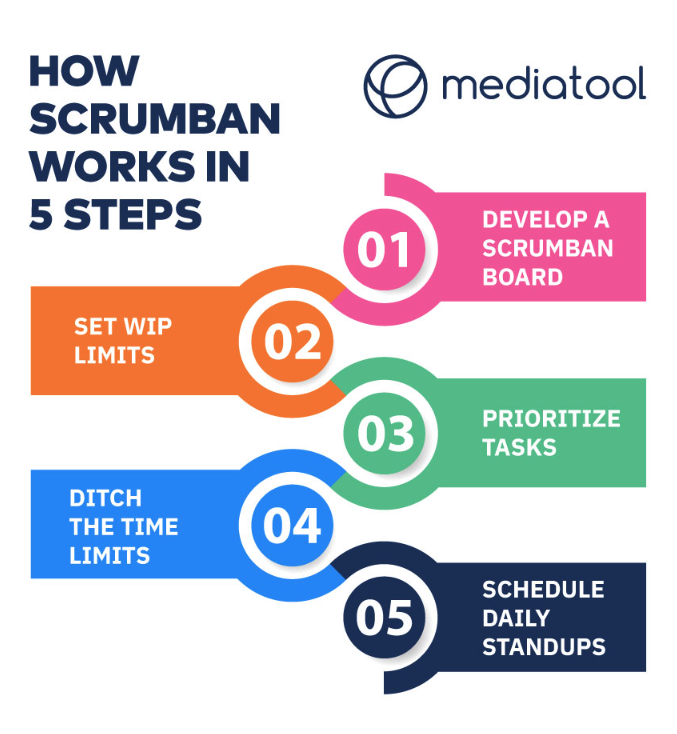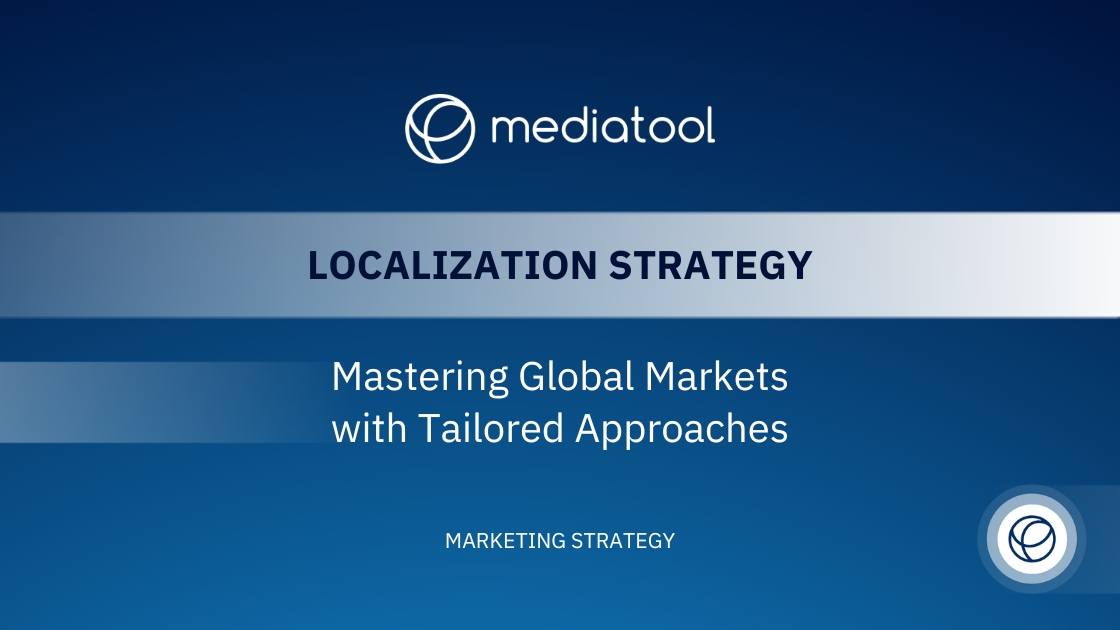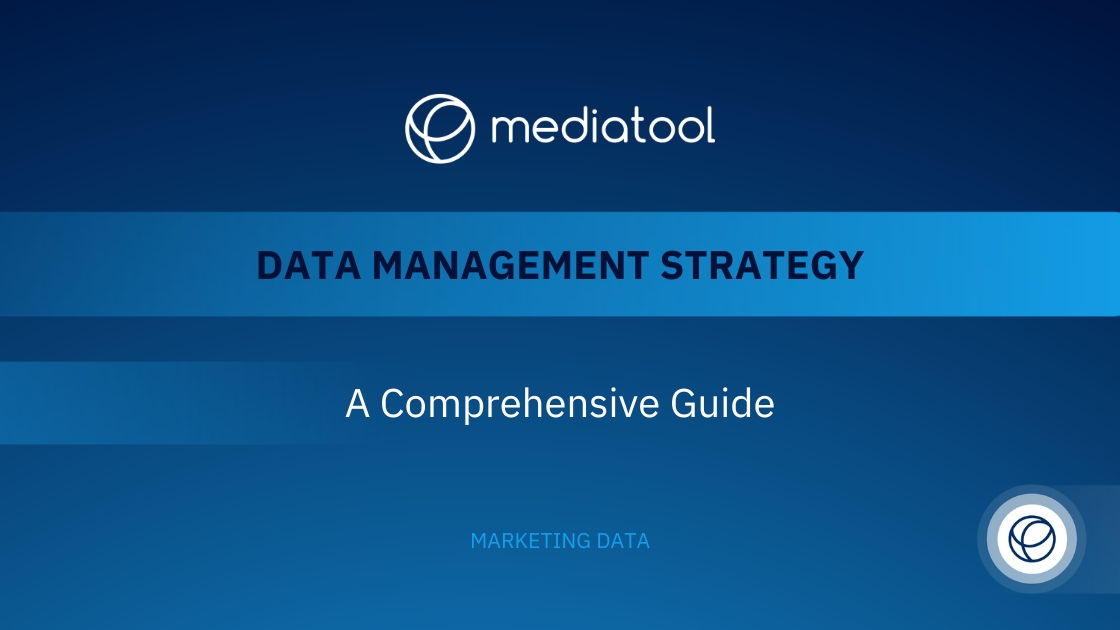Agile marketing is an approach to marketing that utilizes the principles and practices of agile methodologies and has transformed how teams operate.
Agile is an iterative project management methodology used worldwide to streamline operations. The focus is on launching fast, delivering customer value, and optimizing using dynamic feedback loops.
Along the way, Agile eliminates waste while navigating around unforeseen obstacles.
Agile marketing: Same principles, new application.
The principles and values behind Agile were initially codified for software development. But in pretty short order, some switched-on marketing leaders started applying the methodologies to media planning and digital marketing.
As a result, we have agile marketing—a streamlined, strategic, systematic approach to delivering customer value and reducing burnout among marketers.
Curious about agile marketing? Let’s get into it.
What is Agile Marketing?
Agile marketing is a collaborative and dynamic approach, characterized by agile marketing teams working in focused sprints. This process, unlike traditional marketing methodologies, allows for simultaneous task completion with every team member contributing effectively. Agile teams prioritize launching quickly, measuring results in real-time, and continuously optimizing their efforts.
The agile marketing process is rooted in agile methodologies, drawing inspiration from agile software development teams. It emphasizes customer-focused collaboration and utilizes various agile practices, like scrum and kanban, to enhance marketing efforts. Senior marketing leaders and team members in an agile marketing department adaptively manage marketing campaigns, ensuring that they are in line with the agile marketing manifesto’s core values.
Incorporating an agile framework into marketing teams transforms the marketing department into a more responsive and effective unit. This transformation requires a strategic vision, commitment to continuous improvement, and frequent feedback mechanisms. Agile marketing implementation, guided by agile principles, is not an overnight change but a gradual shift towards a more agile mindset in the marketing team.
Key aspects of this approach include the use of specialized software for tracking progress, daily stand-ups for team collaboration, and sprint planning meetings to ensure alignment with the marketing strategy. Agile marketing also emphasizes the importance of adaptive and iterative campaigns, allowing for a more flexible response to market trends and customer needs.
How Does Agile Marketing Work?
Agile marketing operates by dividing the core marketing team into specialized groups, often referred to as pods, squads, or war rooms. These agile marketing teams are structured to focus on specific projects or campaigns, embracing the agile marketing approach and principles set out in the agile marketing manifesto.
For instance, if the goal is to overhaul the company’s website, a cross-functional team is formed. This agile team might include roles like a Content Marketer, SEO Manager, Digital Marketing Analyst, Web Developer, UX Designer, UI Designer, and QA Tester. Coordination and oversight of this agile project are typically managed by a Project/Campaign Manager, akin to a Scrum Master in agile methodologies, who ensures that the agile process is adhered to and that progress is on track.
The effectiveness of agile marketing work depends on the specific roles of team members and the nature of the projects undertaken. Each agile marketing team or agency must establish its own rhythm, adhering to agile practices and frameworks. This approach is pivotal in transforming marketing teams, fostering a culture of continuous improvement, and enabling marketing departments to adapt quickly to market trends and customer needs.
In agile marketing implementation, key performance indicators and continuous feedback are crucial for measuring the success of marketing campaigns and efforts. Utilizing agile software development practices, the marketing team can adapt agile methods to enhance their marketing agility, leveraging tools like kanban boards and daily stand-ups for effective project management and team collaboration.
Overall, the agile marketing process is designed to provide competitive advantages through adaptive and iterative campaigns, guided by the agile mindset and the pursuit of continuous improvement in all aspects of digital marketing.
Characteristics of Agile for Marketing Agencies and Brands
Above anything else, agile marketing teams need to adopt the principles of Agile. You might hear it called the “Agile Manifesto.” But if your team isn’t comfortable with that kind of politically charged language, “Agile principles” do the job just as well.
There are four values behind Agile that permeate everything. From high-level strategy to daily operations, these four values define agile marketing.
Adopting them might be easy or arduous, depending on your team’s readiness to change how they work. But unless you have all four ingrained in your marketing organization, you’re following a hybrid approach at best. And unfortunately, hybrid systems rarely get off the ground.
Individuals and Interactions Over Processes and Tools
People are the driving force behind agile marketing. Resourcing people, not designing processes, should be the CMO’s priority. As soon as the process takes precedence, decision-making becomes rigid fast.
Working Campaign Over Comprehensive Documentation
It’s easy for media planners and marketers to create reams of documentation before executing a single deliverable. Agile de-emphasizes documentation by making delivery the priority. Focus on the results of the process, not the process itself.
Customer Collaboration Over Contract Negotiation
Traditional project management involves customers in early negotiations and at the end of the development process. Agile repositions the customer as a constant collaborator. Translated to agile digital marketing, that means creating feedback loops on a 1:1 scale (or as close as possible). Feedback loops ensure the customer’s input is incorporated and iterations meet their needs.
Responding to Change Over Following a Plan
Following a media plan to the letter can be expensive and ineffective. Agile marketing for agencies and brands embraces iteration. Get your campaign out, even if it’s not perfect. Then use marketing data to adjust and iterate, delivering more customer value with each tweak.
The 12 Principles of Agile
As well as the four overarching values, Agile follows 12 principles. Marketers can use these principles as a playbook or cheat sheet to guide daily operations.
(Note: these are borrowed verbatim from the Agile Manifesto, so the language is techy).
- Our highest priority is to satisfy the customer through the early and continuous delivery of valuable software.
- Welcome changing requirements, even late in development. Agile processes harness change for the customer’s competitive advantage.
- Deliver working software frequently, from a couple of weeks to a couple of months, with a preference to the shorter timescale.
- Business people and developers must work together daily throughout the project.
- Build projects around motivated individuals. Give them the environment and support they need, and trust them to get the job done.
- The most efficient and effective method of conveying information to and within a development team is face-to-face conversation.
- Working software is the primary measure of progress.
- Agile processes promote sustainable development. The sponsors, developers, and users should be able to maintain a constant pace indefinitely.
- Continuous attention to technical excellence and good design enhances agility.
- Simplicity – the art of maximizing the amount of work not done – is essential.
- The best architectures, requirements, and designs emerge from self-organizing teams.
- At regular intervals, the team reflects on how to become more effective, then tunes and adjusts its behavior accordingly.
Pros and Cons of Agile Marketing
Pros:
- Emphasizes customer value
- Reduced campaign delivery timelines
- Efficient utilization of marketing budget
- Early delivery of value
- Encourages learning via experimentation
- Enhances cross-functional collaboration
- Ability to rapidly scale campaigns
- Dynamic alignment between sales and marketing
Cons:
- Requires full commitment (hybrid approaches are less effective)
- Necessitates a significant shift in mindset
- Risk of producing inconsistent messaging
- Less flexible than it appears
- Tendency to prioritize actions over results
- Does not substitute for a comprehensive marketing strategy
Myths and Misconceptions
Myth 1: Agile Marketing is Only for Start-ups
Not only is Agile not confined to start-ups, it’s also not even unique to developers. In a survey of 1,300 companies, Harvard Business Review found around 80% were following Agile principles in one or more business functions, including 79% in marketing, 79% in customer support, and 78% in sales.
Myth 2: A Little Agile is Enough
It’s not enough to say you are “doing Agile” if the practices aren’t thoroughly ingrained. Hybrid waterfall-agile approaches might seem like the best of both worlds, but they inevitably fall apart. There have even been studies on why hybrid project management systems don’t work.
Myth 3: Agile Marketing is Quick and Dirty
Agile digital marketing might deliver a campaign faster, but if you read the 12 principles, you’ll already know this myth is busted. Agile is about minimizing unnecessary work and not rushing through the same workload. Agile marketing refines the media planning process by cutting out excessive documentation, meetings, the back-and-forth between siloed teams, and manual data analysis.
Myth 4: Agile Marketing is Inconsistent
Focusing on outcomes instead of the process could make some CMOs nervous about inconsistent marketing. But once again, this fear is misplaced. Effective agile marketing teams have standards that ensure quality and consistency without getting bogged down in process management. Agile isn’t about cutting corners. It’s about responding to customer needs, reducing red tape to enable collaboration, and iterating to optimize campaigns.
Myth 5: Agile Isn’t Sustainable Long-term
This myth likely comes from using words like “sprint” and “scrum.” However, agile marketing might be more sustainable when implemented correctly than traditional management methods. The values and principles emphasize collaboration and streamlined processes, focusing on customer value. All the extra work typically lumped on marketers is deprioritized during the sprint to be addressed in slack periods.
Benefits of Agile Marketing
Productivity Boost
Agile marketing can transform the marketing department into a high-performing marketing machine. Everyone in the team knows their role, is laser-focused on how they will contribute, and is more likely to reach delivery deadlines on time. In fact, 87% of CMOs that transitioned to an agile approach found their teams became more productive.
Supports a Customer-focused Strategy
Customer value is always the center of the agile marketing universe. Every iteration or adjustment responds to the customers’ needs, and every decision uses data from customer interactions. When agile marketing principles support a strategy focused on maximizing customer value, the result is a responsive and optimized media plan.
Teamwork
Agile typically means enlisting intra-departmental collaborators or external specialists to deliver projects. Working with new faces is energizing. A new perspective might help them understand other job functions better. Plus, involving diverse voices in decision-making has been shown to improve productivity and innovation.
Adaptability
Agile is, well, agile. Every marketer knows how hard it is to predict behavior (and, therefore, results) with a high degree of accuracy. So, agile marketing promotes a test-and-learn approach that creates a continuous improvement cycle.
It’s important not to mistake adaptability for flexibility. Although agile encourages rapid course corrections, any changes should be based on data. After a campaign launches, there’s little room for what-ifs.
Transparent Collaboration
Everyone has a specific role and expertise that they lend to the project’s success (or failure). The team then works in sync to complete their part collaboratively. That way, everyone is in charge of how the project goes and works in sync to ensure the goal is reached.
Higher ROI
More work is done in less time, and results are higher than traditional strategies. This means that agile marketing is more cost-effective for companies, and the return on investment is more significant.
Get better at creating ROI reports.
Data-driven Optimization
With regular testing, iterations, and meetings to spot any issues, campaigns are better optimized to produce better results. In addition, measuring results frequently provides more chances to spot value-adding opportunities in your data.
Increased Employee Satisfaction
Agile marketing practices enable your team to get more done. Teams are more productive, enjoy working with their colleagues, feel a sense of purpose, and perform better. Employee satisfaction is bound to go through the roof!
How to Implement Agile Marketing Methodology
Agile Marketing is the Future – But It’s Not a Quick Shift
Agile marketing isn’t going anywhere. It enables teams to keep up with customer trends and respond to audience signals as they happen. It also allows your team to adapt rapidly while producing better results and allocating budgets more efficiently.
However, there are two caveats:
You Will Struggle to Implement it Successfully Without the Right Technology
Agile marketing depends on a reliable real-time feedback loop. You need results from all marketing activity feeding into one place to make rapid-fire optimization decisions. Mediatool can help you manage everything from a top-level overview. You can find out more about Mediatool.
It’s Not a Quick Move
It takes time to figure out what works best for your organization. We suggest testing the processes before rolling them out. Start with one campaign to build a business case and iron out any structural issues. There’s no such thing as a perfect process. However, the more information you have, the faster you can get up and running.
Scrum Method
Sprint Planning
Everyone involved in the project will meet to plan the sprints. Sprints usually take two to four weeks. This is where you would like to discuss the goals and the deliverables needed to reach them.
You can figure out what resources you’ll need and allocate dates. Each sprint has a goal for the end of the allotted period. For example, if you are working on a new paid social campaign, there may be different sprints for ideation, asset creation, copy, and targeting. In this instance, the copy and asset creation sprints may run simultaneously, with teams divided by expertise.
Daily Scrum
As we said, every team differs. Some opt for daily standup meetings, which are usually 15-minute check-ins with the sprint team to discuss any issues or questions that have come up from the day before.
Some teams may not need daily standups and opt for “retros” instead. Retros, or retrospectives, are more likely to occur weekly.
Both offer the same functions:
- To air out any hiccups that arise while the work is being created rather than after the fact
- To make sure everyone is on the same page and understands their role in each sprint
- To ensure the project is tracking as planned
Regular Data Analysis
One area where agile marketing for agencies differs from agile development is constant data analysis. Data and agile marketing go together like bread and butter. To continue campaign sprints and reach goals, the team regularly reviews analytics to spot insights, anomalies, problems, or pain points in the customer journey.
Reports are discussed in the daily standup, so everyone is kept accountable for the campaign’s overall performance.
Ideation and Testing
Rather than leaving issues until the campaign or project has finished, agile agencies and marketing teams glean insights from real-time digital marketing data. They use the data to create a hypothesis and plan tests to optimize campaign delivery. Everyone has a say. The best ideas are tested, prioritized, and scaled.
For example, let’s say a conversion rate isn’t as high as predicted. After interrogating the data, it becomes clear that the call to action isn’t resonating with the customer segment. The team may decide to run an A/B test with a different CTA for a two-week sprint, compare the results, and move forward with the best-performing option.
Kanban Method
Developed for Toyota in the 1940s by the engineer Taiichi Ohno, Kanban project management is based on a paradox. The less work we do, the more productive we are.
(Yes, we understand that marketers might laugh at the idea of “less work,” but hear us out.)
Think about how much time you lose task-switching. When applied to marketing teams, Kanban aims to eliminate waste through a just-in-time approach. Essentially, it’s a system of signaling when work is ready to move to the next stage.
Let’s say you’re developing a seasonal campaign. Using Kanban boards, your team has complete visibility over the process, so they know when to start working on their part. They’re not tempted to take on new projects, jump ahead, or sit on their hands because the visual cues in the Kanban board are clear and concise.
Visualize Workflows
The English translation of kanban (lowercase k) is “signal board.” These signal boards create a transparent workflow system in the Kanban (upper case K) system. Anyone can see at a glance where tasks are in the pipeline, so there’s no downtime and no waste.
Limit WIP
Work-in-progress (WIP) limits are core to Kanban. Each phase of work has an upper limit of productivity, and anything over the limit is treated as waste.
Without WIP limits, work piles up, and people get overwhelmed. Setting – and sticking to – an upper productivity limit keeps your team energized and focused.
Manage Flow
WIP limits are only practical if your team can accurately estimate the resources needed for a task. Those resources could be staff hours, data processing time, server calls, supplier timelines – any quantifiable factor that can be capped with a WIP limit.
Managing flow is about shifting focus from people to work. Rather than allocating tasks to fill on an employee’s calendar, leaders allocate time-based on how long the job will take. This focus shift moves work through the pipeline faster and uses limited resources more efficiently.
Make Process Policies Explicit
Kanban marketing can be brutal. Before embarking on any project, your team should have explicit policies in place that reflect the following:
- Which tasks or outcomes are important
- Which tasks can your team ignore
- The trade-offs you’re willing to accept
- Procedures to handle scope creep
- How to clear blockages and backlog
Again, it comes back to maximizing productivity and minimizing waste. If everyone is clear on what’s important, it’s much harder to get distracted by new requests and last-minute additions.
Establish Feedback Loops
Feedback loops, also called cadences, identify areas for improvement and turn those insights into actionable work items. In Kanban methodology, feedback loops have four parts:
- Capturing and storing data
- Analyzing stored data
- Making decisions based on data analysis
- Implementing changes
You could see cadences as a distillation of scrum methods ingrained in Kanban.
Continuous Improvement
Continuous improvement aims to maximize customer value while reducing waste. (Waste in this sense being overwork, excessive documentation, or inefficient marketing budget use).
In theory, the continuous improvement cycle is relatively simple:
However, implementing this cycle in practice can be challenging, so starting small and scaling up is recommended.
But be aware that adopting kanban principles doesn’t guarantee continuous improvement. CMOs and senior marketing leaders need to make it part of the culture by inspiring, incentivizing, and rewarding continuous improvement.
Scrumban
Scrumban, as the name suggests, combines the dynamic duo of agile marketing methodologies, Scrum and Kanban.
In a Scrumban system, marketing teams use the structure and predictability of Scrum to guide a Kanban-style continuous improvement cycle. It’s a practical approach for tasks with no set end date (e.g., always-on marketing campaigns) and for teams who need more flexibility than Scrum’s processes permit.
How Scrumban Works in 5 Steps

Develop a Scrumban Board: This will look like a Kanban board, with columns that delineate the phases of the project. In a digital marketing context, these phases might be planning, launching, tracking, measuring, and optimizing.
Set WIP Limits: Scrum sets the time and task limits. Kanban uses WIP limits to prevent overwork. The combined approach limits the number of cards in each column on the Scrumban board, using a Scrum-style time limit to establish a reasonable WIP capacity.
Prioritize Tasks: Individuals are assigned tasks during a sprint, while in Scrumban, the focus is on prioritizing all projects on the board. This dovetails into WIP limits. Your team – or the breakout teams, which function like Scrum teams – will decide who tackles what tasks.
Ditch the Time Limits: Work is continuous and not time-bound in Scrumban, so it’s unnecessary to detail the resources needed for each task. Instead, task priority takes precedence, with WIP limits in place to minimize wasted time.
Schedule Daily Standups: Scrumban doesn’t have the typical sprint features like sprint planning, review, or retrospective. But you’ll want to keep the standups. Discussing the objectives and challenges for the upcoming day (or week, depending on your cadence) encourages collaboration and transparency.
The Agile Marketing Team
To be effective, agile marketing needs to be a team effort. Half-committing to an agile marketing framework will result in poor performance, process uncertainty, and messy media planning.
We don’t want that.
So before you start the agile digital marketing journey, get your team aligned and on board.
Overcoming Resistance: Some marketers might have tried an Agile approach before and be resistant due to a bad experience. That’s natural. Listen to their concerns and find ways to demonstrate a solution.
Agile Marketing Teams:
Align With Leadership: Agile principles support a long-term marketing strategy, contributing to business growth. If the organization is aligned, every decision adds more value to the bottom line.
Set Expectations: The idea that agile marketing is a free-for-all is a misconception. CMOs and senior marketing leaders must set clear expectations so the team knows what’s expected when transitioning to an agile marketing agency.
Prioritize the Customer: Customer value always comes first. Agile digital marketing enables rapid response to customer behavior and engagement signals while doing away with cumbersome processes.
Analyze Data to Identify Value-adding Opportunities: Marketing data that’s high-quality, readily available, and reliable is a critical enabler for agile digital marketing. The continuous improvement cycle is based on analyzing data and adjusting to optimize results.
Design and Run Tests : One of the most significant benefits of agile digital marketing is launching campaigns faster and optimizing on the fly. Marketers should use data as a guide to design multivariate tests that result in rapid campaign optimizations.
Iterate Based on Results: Testing happens on a limited scale, for example, with a small audience segment. Once the test is live, and data is coming in, agile for agencies and brands empowers marketers to scale up with conviction.
How to Build an Agile-Ready Martech Stack
Before investing in MarTech for agile marketing, it’s worth reiterating that Agile doesn’t replace strategy.
CMOs and senior marketers shouldn’t base investments solely on enabling agile marketing. Flip that equation. Agile principles support a customer-focused marketing strategy. MarTech is the enablement tool for rapid iteration, collaboration, and continuous improvement informed by data.
That means the most critical software investment you can make is a single source of truth for all your marketing data.
Any other technology is icing on the cake.
Step 1: Identify Your Needs
There are thousands of marketing platforms on the market and no one-size-fits-all solution. Start with strategy. Revisit the business strategy, align the long-term marketing strategy, and detail what you need your MarTech to do.
As you progress through the following steps, keep that list of requirements close at hand. Don’t compromise on it. Consider how your team could leverage these for business growth if there are extra features in the bargain.
Step 2: Map Existing Assets
Overlay the strategic requirements from step 1 against your existing MarTech. In this step, you are looking for the following:
- Existing value-adding assets
- Underutilized tools
- Capability gaps
- Scalability
- Collaborative relationships with MarTech vendors
From there, you can create a transitional roadmap towards a fully-equipped agile MarTech stack. CMOs and purchase decision-makers would do well to keep Agile values in their mind in this step. Streamlining the MarTech stack by centralizing data collection in a single source of truth is the most efficient use of limited resources.
Step 3: Establish a Budget
MarTech investments shouldn’t strain your marketing budget, and they should deliver ROI. Think Agile in this step, prioritizing results over process. CMOs have a tough job balancing limited budgets with limitless demands for resources. Focusing on long-term growth and strategic alignment ensures the best use of the budget.
A 2022 survey from Gartner found that CMOs reported using 25% of their marketing budget on technology while utilizing just 42% of the stack’s potential.
The biggest contributor? Overlap between marketing tools.
Those CMOs clearly haven’t trialed Mediatool, the all-in-one media planning and marketing platform supporting agile digital marketing campaigns.
Step 4: Research and Trial
Once you have a shortlist of budget-friendly, growth-enabling, strategically-aligned MarTech tools for agile digital marketing, take some free trials. Any vendor interested in a long-term relationship will be happy to take you on a tour.
Collaboration is essential in the trial phase. Although CMOs have the experience and insight to assess a tool’s value, they might not work with the software daily. Assemble a diverse team of representatives to test the tool: marketing managers, marketers, data analysts, contributors, content creators – anyone who can provide feedback that adds value.
Step 5: Implement
Realistically, steps 1-4 are the first half of the journey. Implementing a new agile MarTech platform takes time and effort. Still, the investment will pay off quickly if you’ve made the right decision.
MarTech vendors should be engaged early and given full access (with supervision from IT) to ensure the new software is integrated with the existing stack. The implementation process is a collaborative project involving the vendor, senior leaders, IT, operators, and collaborators.
Of course, we’re talking about a powerful MarTech platform that brings all corners of the business together to create an agile marketing agency or brand team. Smaller operational tools, such as graphic design software or payment technology, might not need involvement from so many stakeholders. Still, it’s always better to consult a diverse team to ensure all angles are covered.
Meet Your Agile Marketing Partner, Mediatool
Mediatool is the end-to-end campaign management platform for agile digital marketers. With data from all your major channels available in a flexible, user-friendly dashboard, your team can drill down or zoom out to make informed decisions.
We work with global brands and growing agencies to provide the tools that enable growth. Led by experienced marketers and with a team of developers who live and breathe Agile, we know what best practice looks like.
Mediatool helps agile agencies and marketing teams plan, launch, analyze and optimize digital marketing campaigns. You can learn more about the features at mediatool.com or take a guided tour to see it in action.





